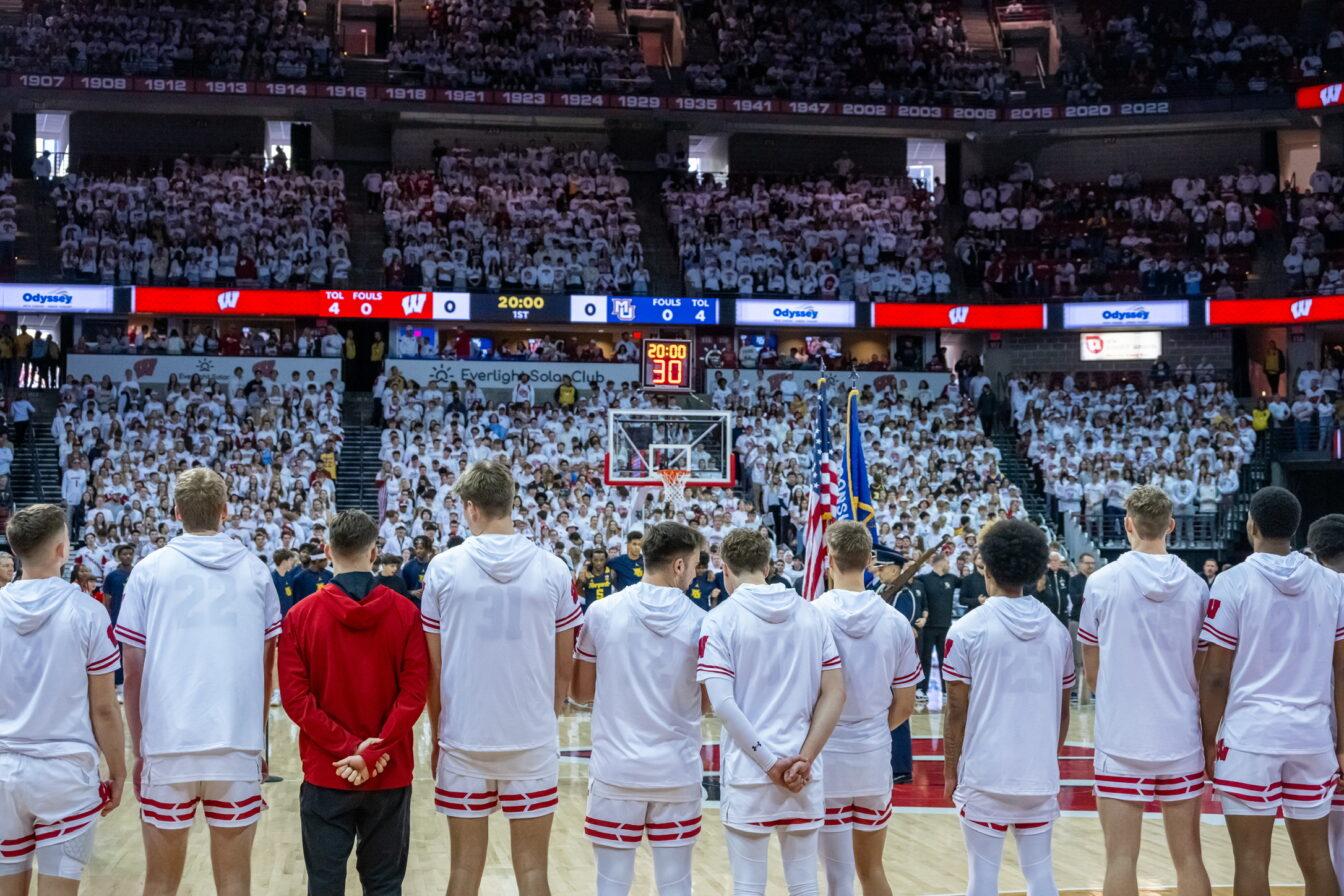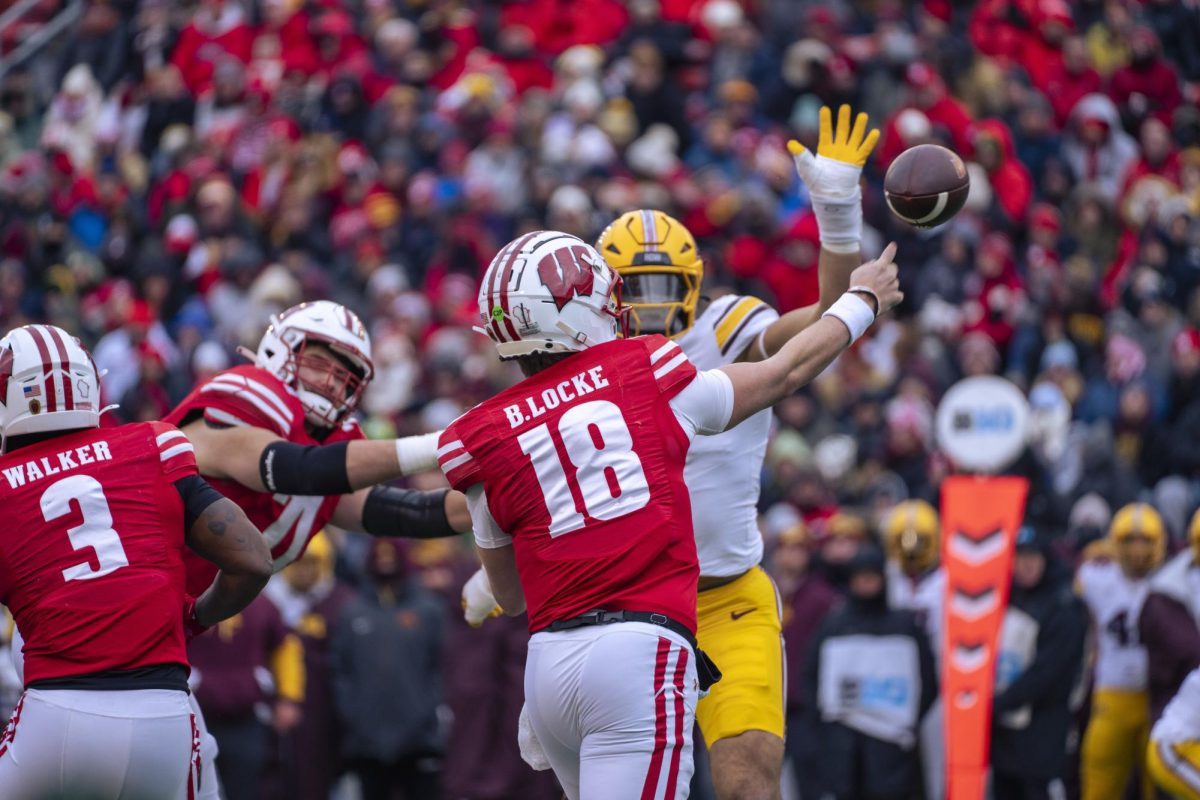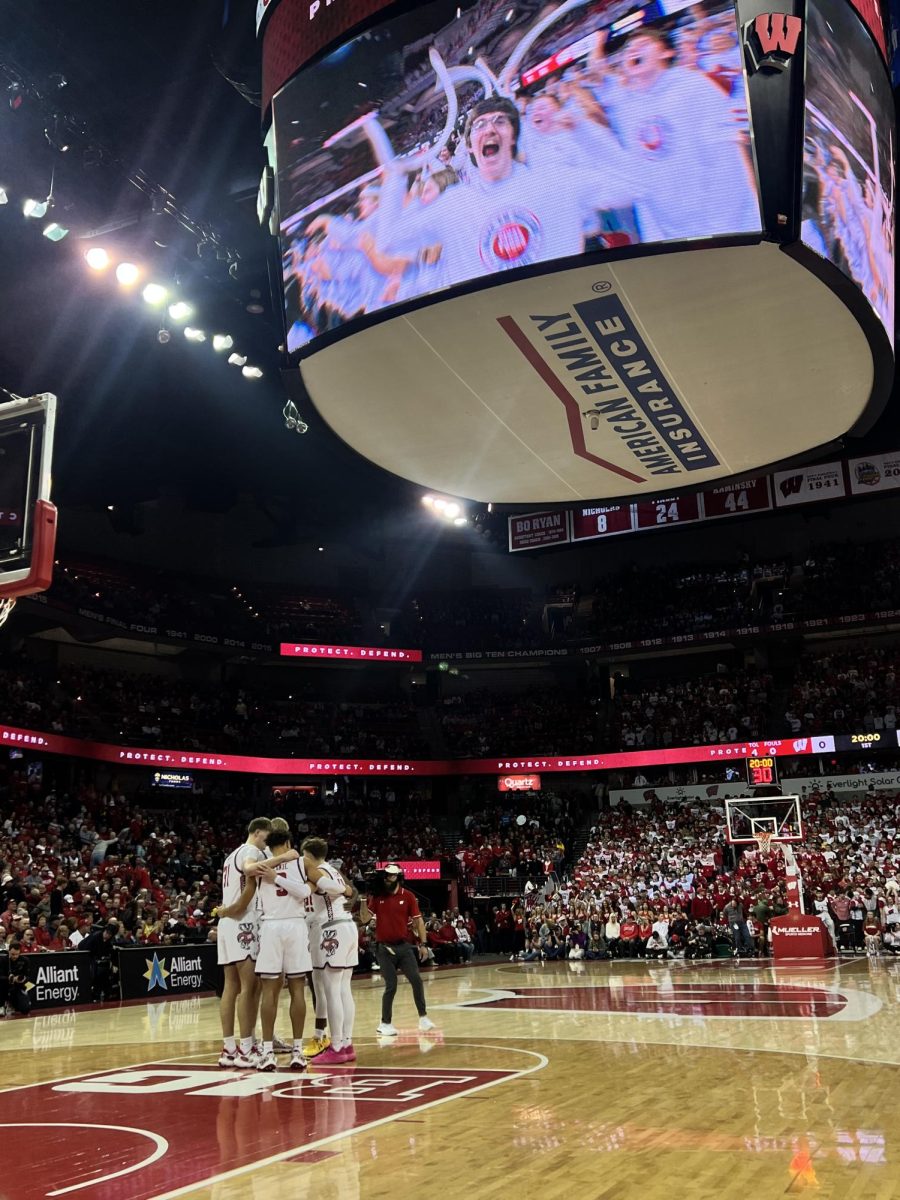There were plenty of pleasant surprises to start the season for the Wisconsin men’s basketball team. In just the second game of the season Wisconsin took down then-No. 11 Florida — likely to be No. 1 this week — at home and went on to its best start in program history while climbing to as high as third in the national rankings. There was the emergence of freshmen Bronson Koenig and Nigel Hayes, and no lingering effects of Josh Gasser’s ACL injury. But, I submit that nothing has been bigger (literally) than the rise of 7-footer Frank Kaminsky.
With the departure of Jared Berggren, it was widely assumed that the starting job at the five position would be inherited by Kaminsky. But after averaging just 10 minutes and four points per game his sophomore season, no one outside of the team knew what sort of impact he could have on this Wisconsin team.
Now 27 games into the season and coming off of perhaps his two best games of his career — save the 43-point outburst against North Dakota — Kaminsky has proven to be as important as anyone on the Wisconsin roster. In fact, I would wager the big man is the key to any success the Badgers hope to have in March.
For starters, the Lisle, Ill. native has raised his scoring total by nearly 10 points and is the second-leading scorer on the roster averaging 13.3 points. Kaminsky is in the top-10 in rebounding, seventh in blocked shots and ranks fourth in the Big Ten with a 54.8 field goal percentage. So, it is safe to say Kaminsky is a major piece of the Wisconsin machine.
But what is even more convincing is the disparity between Kaminsky’s numbers in games Wisconsin wins compared to games it loses.
During the 16-game winning streak that the Badgers put together to start the season, Kaminsky was averaging 13.6 points and six rebounds. In contrast, in Wisconsin’s five losses, Kaminsky averaged just 10 points while only averaging only 2.6 free throws in those five games. In Wisconsin’s nine Big Ten wins, the center is averaging 4.1 trips to the free throw line and nearly 14 points.
What jumps out at me most is the difference in three-point shots Kaminsky makes in wins compared to losses. Obviously Wisconsin has plenty of guys on the floor that can make a shot from long range, so why have your 7-footer out on the perimeter?
The numbers speak for themselves. In wins, Kaminsky averages three makes from beyond the three-point line and in losses he has made just a total of one three-point shot. I believe this is the case for two reasons. One is the obvious reason that making more three-point shots give Wisconsin more points. I know, it’s genius! The other factor is when Kaminsky makes shots from three-point range, it forces the opposing team’s center to respect that shot and is forced to the perimeter when Kaminsky ventures out there. When that happens, there is much more space for backdoor cuts, drives and slashes to the basket which provide high-percentage shots for Wisconsin.
But, more than any of those reasons, when determining how important Kaminsky is to the success of Wisconsin, you just need to look at the Badgers’ last two games at Michigan and at Iowa.
In both of those road wins against top-15 teams, Kaminsky had huge games picking up a double double against Michigan Feb. 16 with 25 points and 11 rebounds and backed that performance up with 21 points and 7 rebounds against Iowa Feb. 22.
Kaminsky was a major part in closing out both of Wisconsin’s last two games as both Iowa and Michigan mounted serious comebacks, but Kaminsky played with confidence in the paint making strong post moves to get high percentage shots and drawing fouls. And against Michigan, Kaminsky hit his biggest shot of the game from behind the three-point line with just more than two minutes left to put the game out of reach for the Wolverines.
When entering the Big Ten tournament and the NCAA tournament, three-point shots will play a big role in Wisconsin’s success as usual, but if Kaminsky can continue to play with the confidence and efficiency that he has found of late, the Badgers will prove to be a tough out in the post season.
A shooter can go cold from time to time, which puts teams who rely on long-range shots at risk, but if Wisconsin has Kaminsky on the block taking high-percentage shots and drawing fouls UW will have enough offensive balance to make more noise than the cardinal and white have made since 2000.













